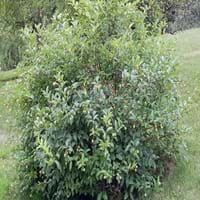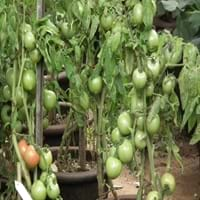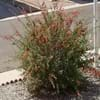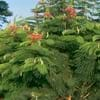Life Span
Annual and Perennial
Annual and Perennial
Origin
South Africa
Mexico, Central America, South America
Types
Not Available
Plum Tomato, Serbian Tomato, Stupice Tomato
Habitat
Boggy areas, Dappled Shade, Shady Edge, Sunny Edge, Woodland Garden Canopy
Cultivated Beds
USDA Hardiness Zone
9-11
11-15
Sunset Zone
H1, 14, 15, 16, 17, 18, 19, 20, 21, 22, 23, 24
A1, A2, A3, H1, H2, 1a, 1b, 2a, 2b, 3a, 3b, 4, 5, 6, 7, 8, 9, 10, 11, 12, 13, 14, 15, 16, 17, 18, 19, 20, 21, 22, 23, 24
Habit
Upright/Erect
Vining/Climbing
Flower Color
Light Yellow, Ivory
Yellow
Flower Color Modifier
Not Available
Bicolor
Fruit Color
Brown
Red, Rose, Coral
Leaf Color in Spring
Green
Green, Dark Green
Leaf Color in Summer
Green
Green, Dark Green
Leaf Color in Fall
Green
Green, Dark Green
Leaf Color in Winter
Green
Green, Dark Green
Leaf Shape
Egg-shaped
Bell Shaped
Plant Season
Spring, Summer, Fall, Winter
Spring, Summer, Fall
Sunlight
Full Sun, Partial Sun
Full Sun
Type of Soil
Loam, Sand
Loam, Sand
The pH of Soil
Acidic, Neutral
Neutral
Soil Drainage
Average
Well drained
Bloom Time
Early Spring, Spring, Late Spring, Winter, Late Winter
Indeterminate
Tolerances
Wet Site
Drought
Where to Plant?
Ground, Pot
Container, Ground, Pot
How to Plant?
Seedlings, Stem Cutting
Seedlings, Transplanting
Plant Maintenance
Medium
Medium
Watering Requirements
Requires 4 to 8 inches of water above the soil line
Average Water Needs
In Summer
Lots of watering
Lots of watering
In Spring
Moderate
Moderate
In Winter
Average Water
Average Water
Soil pH
Acidic, Neutral
Neutral
Soil Type
Loam, Sand
Loam, Sand
Soil Drainage Capacity
Average
Well drained
Sun Exposure
Full Sun, Partial Sun
Full Sun
Pruning
Prune in early summer, Remove damaged leaves, Remove dead branches, Remove dead leaves, Trim each shoot back to the first set of leaves
Cut or pinch the stems, Pinch Tips, Prune for shortening long shoots, Remove damaged leaves, Remove dead branches, Remove dead leaves, Remove short twigs, Remove tight V-branching crotches
Fertilizers
All-Purpose Liquid Fertilizer
Apply 5-10-5 amounts
Pests and Diseases
Red blotch
Red blotch
Plant Tolerance
Wet Site
Drought
Flower Petal Number
Not Available
Single
Fragrant Flower
Not Available
Yes
Fragrant Leaf
Not Available
Yes
Fragrant Bark/Stem
Not Available
Yes
Foliage Texture
Fine
Medium
Foliage Sheen
Matte
Matte
Attracts
Butterflies
Butterflies
Allergy
Toxic
Abdominal pain, Dermatitis, Oral Allergy, Rhinitis, Urticaria
Aesthetic Uses
Showy Purposes
Not Used For Aesthetic Purpose
Beauty Benefits
Not Available
Good for skin
Environmental Uses
Air purification
Air purification, Food for animals, Food for birds, Food for insects
Medicinal Uses
Astringent, Diaphoretic, Diuretic, Emetic, Febrifuge, Laxative, Odontalgic, Ophthalmic, Tonic
Antirheumatic, Cardiac, Homeopathy, Odontalgic
Part of Plant Used
Bark, Fruits, Inner Bark, Root, Wood
Fruits, Seeds
Other Uses
Used for woodware
Cosmetics, For making oil, Repellent, Used as an insecticide
Used As Indoor Plant
No
Yes
Used As Outdoor Plant
Yes
Yes
Garden Design
Bog Garden, Cutflower, Dried Flower, Everlasting, Feature Plant, Mixed Border, Tropical
Container, Edible, Herb, Vegetable, Vine
Botanical Name
BERZELIA lanuginosa
LYCOPERSICON esculentum 'Soldacki'
Common Name
Buttonbush
Tomato
In Hindi
Buttonbush shrub
बीफस्टीक टमाटर
पौधा
In German
Button Strauch
Beefsteaktomate
Pflanze
In French
buttonbush arbuste
tomate beefsteak
Plante
In Spanish
arbusto buttonbush
Bistec de tomate
Planta
In Greek
Buttonbush θάμνος
μπριζόλα Ντομάτα
Φυτό
In Portuguese
arbusto Buttonbush
tomate Redondo Vermelho
Plantar
In Polish
Buttonbush krzew
befsztyk pomidorowy
Roślina
In Latin
Frutex Buttonbush
Nullam beefsteak
planta
Phylum
Magnoliophyta
Magnoliophyta
Class
Magnoliopsida
Magnoliopsida
Family
Bruniaceae
Solanaceae
Genus
Cephalanthus
Solanum
Clade
Angiosperms, Asterids, Eudicots
Angiosperms, Asterids, Eudicots
Tribe
Not Available
Not Available
Subfamily
Not Available
Not Available
Season and Care of Buttonbush and Beefsteak Tomato
Season and care of Buttonbush and Beefsteak Tomato is important to know. While considering everything about Buttonbush and Beefsteak Tomato Care, growing season is an essential factor. Buttonbush season is Spring, Summer, Fall and Winter and Beefsteak Tomato season is Spring, Summer, Fall and Winter. The type of soil for Buttonbush is Loam, Sand and for Beefsteak Tomato is Loam, Sand while the PH of soil for Buttonbush is Acidic, Neutral and for Beefsteak Tomato is Neutral.
Buttonbush and Beefsteak Tomato Physical Information
Buttonbush and Beefsteak Tomato physical information is very important for comparison. Buttonbush height is 365.76 cm and width 182.88 cm whereas Beefsteak Tomato height is 182.88 cm and width 60.00 cm. The color specification of Buttonbush and Beefsteak Tomato are as follows:
Buttonbush flower color: Light Yellow and Ivory
Buttonbush leaf color: Green
Beefsteak Tomato flower color: Yellow
- Beefsteak Tomato leaf color: Green and Dark Green
Care of Buttonbush and Beefsteak Tomato
Care of Buttonbush and Beefsteak Tomato include pruning, fertilizers, watering etc. Buttonbush pruning is done Prune in early summer, Remove damaged leaves, Remove dead branches, Remove dead leaves and Trim each shoot back to the first set of leaves and Beefsteak Tomato pruning is done Cut or pinch the stems, Pinch Tips, Prune for shortening long shoots, Remove damaged leaves, Remove dead branches, Remove dead leaves, Remove short twigs and Remove tight V-branching crotches. In summer Buttonbush needs Lots of watering and in winter, it needs Average Water. Whereas, in summer Beefsteak Tomato needs Lots of watering and in winter, it needs Average Water.





